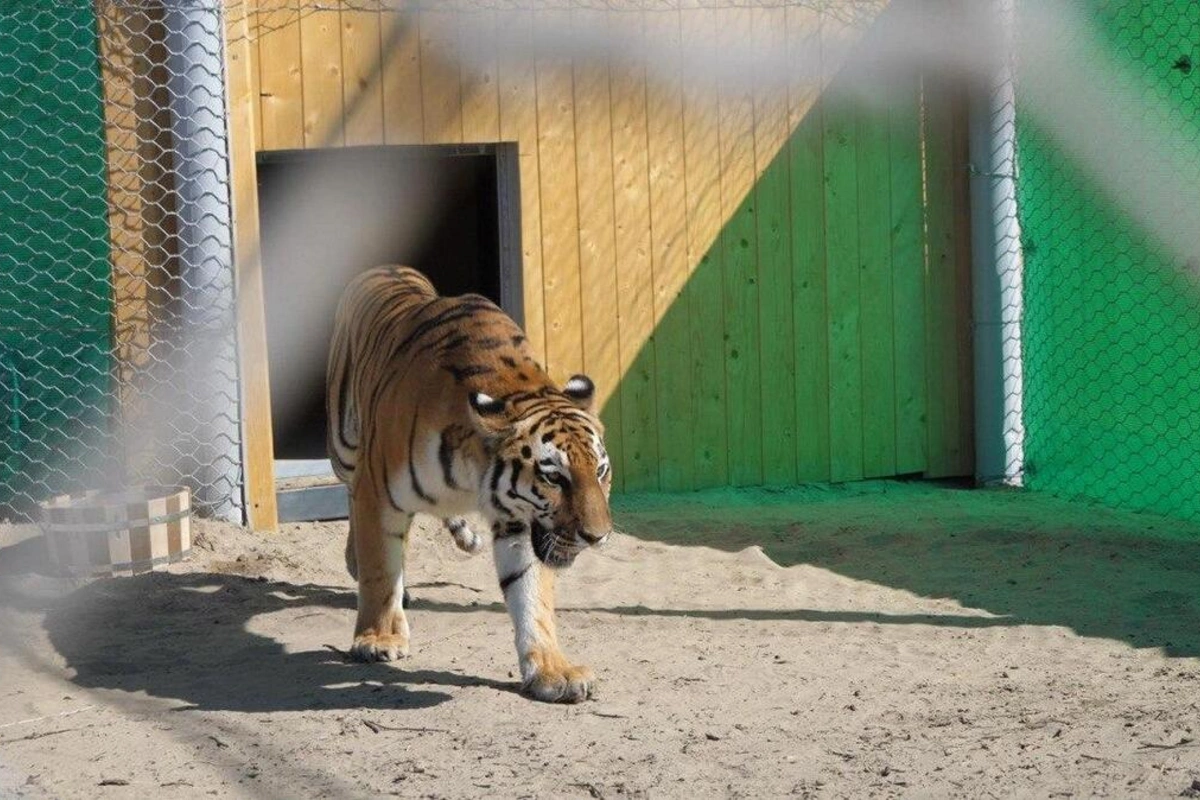
Kazakhstan Launches Program to Reintroduce Tigers to Lost Habitat
Image: gov.kz
(Euasianet) Following up on their success in reviving the threatened saiga antelope population, authorities in Kazakhstan are attempting to reintroduce tigers to an area near Lake Balkhash.
Caspian tigers, also known as Turan tigers, roamed the Kazakh steppe until disappearing about 70 years ago. To launch the revival program, Kazakh authorities announced September 23 that two Amur tigers, a male and female, were brought in from the Netherlands. In 2025, up to four more Amur tigers are expected to be procured from Russia.
Ecology Minister Yerlan Nyssanbayev said Amur tigers are preferred for the program because they, like Turan tigers, are accustomed to severe cold, while other tiger species thrive in warmer climates. Citing standards developed by the International Union for Conservation of Nature and Natural Resources, “Amur” and “Turan” are not considered separate subspecies of tigers, so the animals being reintroduced to Kazakhstan can be classified as the Turan (Caspian) breed.
“For Kazakhstan, this is not only an ecologically important project, but also a symbol of joint efforts to restore the natural heritage,” said Nyssanbayev.
The Kazakh government first expressed a desire to reintroduce tigers in 2010. Eight years later, with support from the United Nations Development Program, the “Ile-Balkhash State Nature Reserve” Republican State Institution was created to serve as the tigers’ future habitat. The reserve features thousands of hectares of forested territory near Lake Balkhash and “preserves the unique biodiversity of steppe ecosystems, including rare and endangered species such as saiga antelope, marbled polecat … [and] pallas sand grouse,” according to the UNDP.
Presently, the tigers are undergoing an acclimatization process in a small enclosure near the protected area before moving into a more spacious area, the department said in a statement. Their descendants will live in the wild in the national park, which is projected to accommodate up to 100 tigers, officials say. Turan tigers tend to be larger than other tiger types, featuring powerful legs, small ears and a more yellowish than orange coat with black stripes.
Turan tigers’ preferred habitat was among the reed thickets and forests along the banks of the Ili and Syr Darya rivers in southern and southeastern Kazakhstan. During the late Tsarist and early Soviet periods, tigers increasingly caused trouble for local residents, killing cattle and occasionally attacking humans, prompting concerted efforts to exterminate them. According to official data, the last Turan tiger was killed in 1948.
Officials stress that the new tiger population won’t pose a threat to humans or livestock.
“Improving the tiger’s natural food supply and the remoteness of the reserve will help avoid a conflict between the tiger and humans,” Nyssanbayev told reporters. The main food source for the tigers will be wild boars and saigas, of which there are now more than enough in the country.
An Ecology Ministry statement cited Gert Polet, a wildlife expert at World Wildlife Fund Netherlands, as saying the restoration program “gives hope” that similar revival efforts for endangered or disappeared species could succeed elsewhere.
The Turan tiger experiment hopes to emulate the success of the saiga population restoration. At the outset of the 21st century, saigas were listed as critically endangered. Two decades of well-coordinated conservation efforts among international organizations, Kazakhstan government agencies and local stakeholders have helped restore the population to roughly 2 million today from just 39,000 in 2005. Saigas are presently considered to be a “near threatened” species.
Share on social media